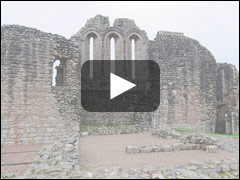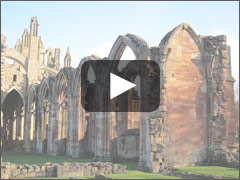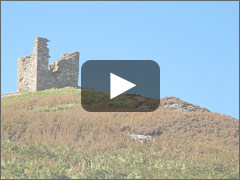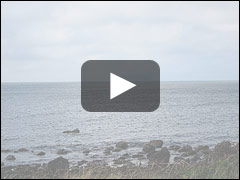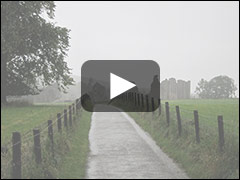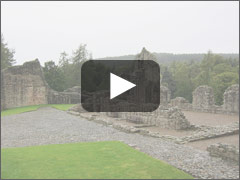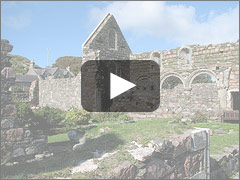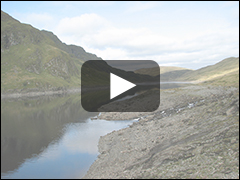Who’s Who in the Highland Guard:
(“war names” in quotes)
With King Robert Bruce:
Tor “Chief” MacLeod: Team Leader and Expert Swordsman
Erik “Hawk” MacSorley: Seafarer and Swimmer
Gregor “Arrow” MacGregor: Marksman and Archer
Eoin “Striker” MacLean: Strategist in “Pirate”
Warfare
Ewen “Hunter” Lamont: Tracker and Hunter of Men
Lachlan “Viper” MacRuairi: Stealth, Infiltration and Extraction
Magnus “Saint” MacKay: Survivalist/Outdoorsman and Weapon Forging
William “Templar” Gordon: Alchemy and Explosives
Robert “Raider” Boyd: Physical Strength and Hand-to-Hand Combat
Alex “Dragon” Seton: Dirk and Close Combat
Arthur “Ranger” Campbell: Scouting and Reconnaissance
Helen “Angel” Sutherland MacKay: Healer
Kenneth “Ice” Sutherland: Explosives & Versatility (i.e. the
Utility Guy)
James “The Black” Douglas: Knight in Bruce’s army
Thom “Rock” MacGowan: Climber
Sir Thomas Randolph: Bruce’s nephew and favored lieutenant
Joan “Ghost” Comyn: Spy
Back to Top
What’s Happened So Far?
Book One
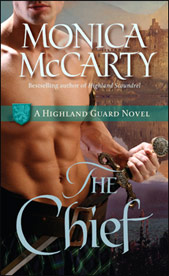
Read | Buy
Book Two
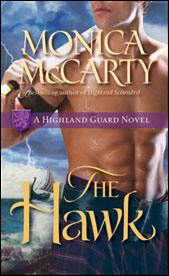
Read | Buy
Book Three
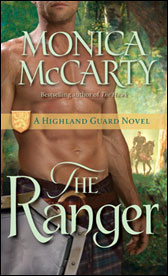
Read | Buy
Book Four
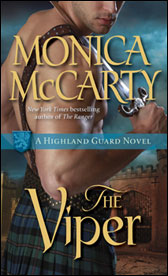
Read | Buy
Book Five
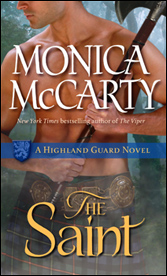
Read | Buy
Book Six
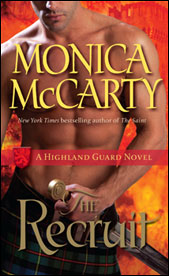
Read | Buy
Book Seven
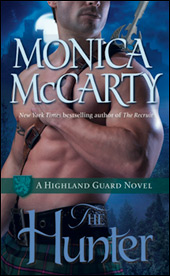
Read | Buy
eNovella
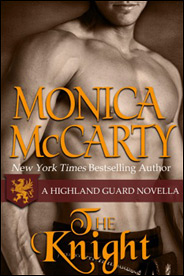
Read | Buy
Book Eight
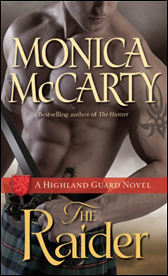
Read | Buy
Book Nine
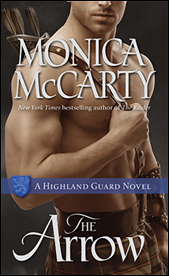
Read | Buy
Book Ten
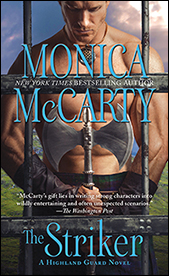
Read | Buy
Book Eleven
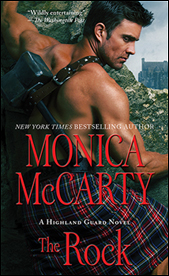
Read | Buy
eNovella
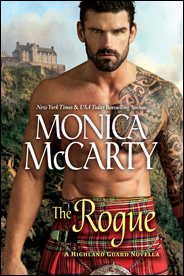
Read | Buy
Book Twelve
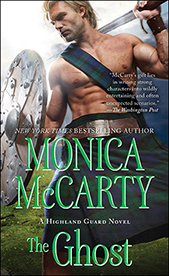
Read | Buy
Note: this is greatly simplified. You can also catch up by reading the “foreword” of each book. For the
non-fiction version of the background events see my historical background section.
This summary is through the eleventh book in the series, THE ROCK.
» THE CHIEF
William Wallace (Braveheart) has died a horrible death at the hands of England’s King Edward, and Robert Bruce
makes the momentous decision to bid for Scotland’s crown. To have a chance at defeating the powerful English
knights, Bruce knows he will have to change the way he fights. He decides to form an elite fighting force made
up of the best warriors in each discipline of warfare—his own secret guard. Or, in this case, his own secret
Highland Guard. He taps Tor “the Chief” MacLeod, hailed as the greatest warrior of his age, to lead and train
ten men in “pirate” warfare. But one of the recruits, Arthur Campbell, is forced to leave the group when he
fails a challenge.
Although initially reluctant to join a war he perceives as not his own, MacLeod changes his mind when his new
bride is threatened and taken prisoner by the English. An attack by MacLeod and the Highland Guard on the
English garrison holding her launches the rebellion.
Bruce’s initial forays against the English are successful, and he races to Scone to be crowned king. Actually, he
is crowned twice: the second ceremony takes place amongst the ancient and mystical standing stones with the
Highland Guard and Isabella MacDuff, the Countess of Buchan, who defies her husband and the most powerful king
in Christendom to take her family’s traditional place as the crowner of Scotland’s kings.
» THE HAWK
Bruce’s rebellion rouses the full force of King Edward’s fury. He raises the Dragon Banner (giving no mercy—even
to women), and forces Bruce to flee Scotland a fugitive. With the help of his Highland Guard, and the seafaring
skills of Erik MacSorley in particular, Bruce takes refuge in the Western Isles.
Taking a lesson from a spider, Bruce bides his time until he can gather troops to “try, try, and try again.” He
puts Erik “the Hawk” MacSorley in charge of securing the mercenaries to attempt to retake his kingdom. But the
attempt nearly fails when Erik is forced to take a captive, not realizing that she is the daughter of the most
powerful earl in Ireland (who also happens to be a close ally of the English king), setting the entire English
fleet on his tail.
Unbeknownst to Bruce and the Highland Guard, while they are trying to escape the English in the west, Bruce’s
womenfolk (his wife, daughter and sisters) and Isabella MacDuff are captured and imprisoned—Isabella and his
sister Mary in cages—and one of this brothers along with many of his loyal friends in arms are executed.
With MacSorley’s help, Bruce wages one of the greatest comebacks in history. The northern prong attack on the
English in Turnberry is successful, as are the skirmishes that follow in the succeeding months—thanks in no
small part to Ellie DeBurgh, the captive Erik decides to make his wife. Unfortunately however, the southern
prong of the attack fails, and two more of Bruce’s brothers are executed.
From “his headquarters in the heather” Bruce’s military victories over the English have renewed his bid for the
throne—a bid that gets a huge boost when King Edward dies.
» THE RANGER
With England distracted by the death of Edward I, Bruce’s fight turns to the powerful Scottish nobles who stand
against him. One by one he vanquishes his enemies, cutting a swathe of destruction across their lands that will
be remembered for generations. First he subdues the MacDowells in the south, before starting his march north
into the Highlands, where he captures the castles of Inverlochy, Urquhart, Inverness and Nairn. But just when
victory appears to be in his grasp, Bruce is felled by a strange illness, leaving the would-be-king hovering
near death.
But even from his sickbed Bruce will not be defeated. Pinned down near Inverurie by John Comyn, the Earl of
Buchan, Bruce is carried into battle by his men. His heroic appearance at the head of his army causes his enemy
to falter, sending Buchan scurrying to England in defeat.
The tide is turning, but there is still one more powerful enemy to subdue: the MacDougalls.
It’s finally time for the seed planted over two years ago to take root. Arthur Campbell was supposedly kicked out
of the Highland Guard during training for failing a challenge, but in reality he’s a spy for Bruce in the
English camp.
Arthur has provided key information for Bruce during his bid to retake his kingdom, but his mission to discover
what he can about the MacDougalls is threatened when he realizes that the one woman who can unmask him is his
enemy’s daughter, Anna MacDougall. Imprisoned and tortured when his true allegiance is uncovered, Arthur escapes
with the help of Anna and the Highland Guard in time to warn Bruce of an ambush.
Thanks to Arthur’s information, Bruce turns the tables on the MacDougalls by ambushing the ambushers, achieving a
seminal victory at the Pass of Brander. With the MacDougalls defeated and John of Lorn fleeing to England like
Buchan, the Earl of Ross submits to Bruce. Bruce now holds Scotland north of the Tay, and his kingship is
solidified enough for him to plan his first parliament.
» THE VIPER
Bruce is finally able to turn his attention to those who are still suffering for his cause: the women captured
and imprisoned in cages by Edward of England. Hung high in a cage above Berwick Castle, Isabella MacDuff,
Countess of Buchan, has suffered greatly for her role in crowning Bruce. No one is more anxious to see her
rescued than the mercenary “pirate” of suspect loyalty, Lachlan MacRuairi.
MacRuairi was in charge of the ladies’ party on their escape north nearly two years before, and feels responsible
for their capture. After one failed rescue attempt, he leads a second and successfully rescues Bella while she
is being transferred to a nunnery.
But as a known member of Bruce’s Highland Guard, MacRuairi is one of the most hunted men on both sides of the
border. Evading capture and second imprisonment, MacRuairi proves his extraction skills—and his loyalty—by
seeing Bella safely returned to Scotland.
MacRuairi and Bella return to Scotland in December of 1308, just in time for Bruce’s first parliament and the
long delayed wedding of William Gordon, who finds out on his wedding night that his bride, Helen Sutherland, is
the woman his partner Magnus MacKay has been pining for for years. Immediately called away on a mission to aid
Edward Bruce, tragedy strike the Guard for the first time when Gordon is killed in an explosion.
» THE SAINT
With England’s king Edward II busy trying to rein in his troublesome barons, Bruce agrees to a truce and enjoys a
much needed reprieve from warfare in 1309. To reward his loyal subjects—as well as ensure the continued loyalty
of newly converted subjects such as Ross and the Sutherlands—Bruce decides to take a royal progress through the
Highlands.
Ironically, in this peace time “lull,” Bruce faces the greatest threat to his life yet. Forced to work together
after the tragedy of Gordon’s death, MacKay and Helen help save the king, when he narrowly escapes death first
from poisoning, and then from the team of assassins who is hunting him over the dangerous Highland terrain.
» THE RECRUIT
After Bruce’s narrow escape from assassins on his royal progress through the Highlands, and despite the
truce being pushed back twice, the king knows the inevitable war with the English is drawing near. When Edward
II of England calls his barons to muster at Berwick Castle, Bruce “recruits” a new member of the
Highland Guard to help him infiltrate the English ranks: Kenneth Sutherland, the heir to the earldom of
Sutherland who had only recently switched his allegiance to Bruce.
Thanks to the information Kenneth uncovers, when the English march into Scotland in late summer of 1310, Bruce
knows the path they will be taking. From his “headquarters in the heather” Bruce launches his new
“pirate” warfare, hitting the English hard with surprise attacks and skirmishes, but refusing to
meet them in an open field. Demoralized and frustrated, King Edward is forced to slink back to Berwick with his
tail between his legs and wait out the winter, delaying, not deciding, the final battle to come.
In addition to bringing back the key information—and a wife, the former Mary of Mar—from England, Sutherland also
convinces another Scottish earl to return to the fold: the young earl of Atholl.
» THE HUNTER
From the first days of his kingship, Robert the Bruce has relied upon not just the warriors of the Highland
Guard, but another powerful ally: the church. The support of men such as William Lamberton, the Bishop of St.
Andrews has proved invaluable, with his network of spies and “couriers of the cloth,” providing much
needed intelligence.
When one of these couriers, a nun, goes missing, Bruce calls for his best tracker, Ewen Lamont, to find her. But
it turns out Janet of Mar, is only pretending to be a nun, and thanks to her—and a secret noblewoman
informant—Bruce is warned of the English plan to take him at a truce meeting at Selkirk.
» THE KNIGHT
With the treacherous plan to take Bruce thwarted, King Edward is forced to wait out the long months of winter and
early spring in Berwick-upon-Tweed, until he can mount a second invasion. But there is no rest for Bruce and his
men. While preparing for the second English invasion, they set about ousting the English occupiers from some of
Scotland’s key castles. The Bruce might not have the terrifying siege engines the English do to take a
castle, but he has something just as destructive: men like James Douglas, whose cunning, skill, and ferocity
will become legend.
After tricking the English from his own stronghold and setting it afire (continuing the scorched earth practice
of William Wallace), James uses a Trojan Horse ploy to help take Linlithgow Castle.
» THE RAIDER
The long awaited second invasion never materializes, however, when in the summer of 1311 King Edward is forced to
return to London to deal with his recalcitrant barons. After over ten months in the North, Edward has little to
show for his efforts.
Bruce immediately takes advantage of the English king’s withdrawal, going on the offensive and taking his
war deep into the English countryside, with a series of raids to help replenish his empty royal coffers and fund
the costly sieges to clear the enemy garrisons.
Like the Vikings before them, the fierce Scot raiders strike terror deep in the heart of the enemy. None is more
terrifying than Robbie “Raider” Boyd, the man Bruce has put in charge of keeping his peace in the
lawless, war-torn Borders, and bringing the English barons to heal by exacting payment in exchange for a truce
from raiding.
With Bruce laying siege to Dundee castle, Robbie needs a truce from Sir Robert de Clifford. A truce to which
Clifford refuses to agree until Robbie accidentally takes his sister as hostage. The ruthless Scottish patriot
ends up with a truce and an English wife, and with the funds from Clifford, another castle falls to Bruce.
» THE ARROW
Bruce’s luck runs out, however, when an attempt to take one of the most important castles of all, Berwick Castle,
is foiled by a barking dog and Gregor “Arrow” MacGregor’s hesitation to shoot. Plagued by recent mistakes and
errant shots (by the man who never misses), Gregor returns home to get his head back on straight and attend to a
troublesome “ward.”
But Cate, the young girl he rescued years before and brought to his mother to care for because he thought her an
orphan, is all grown up and determined to make him notice her. He does, which ends up being a problem when he
learns that Cate isn’t an orphan but is the natural daughter of Robert the Bruce. Cate’s secret is revealed
during Bruce’s attempt to take Perth Castle—this one successful—when she saves her father from an attempt on his
life.
» THE STRIKER
Since the near-disastrous loss of more than half his men and two of his brothers at Loch Ryan in 1307 as part of
the campaign to retake his kingdom, Robert the Bruce has been waiting to bring the man responsible, Chief Dugald
MacDowell, to heel. Six years later Bruce has his chance when Eoin MacLean, the tactician of the Highland Guard,
learns that MacDowell’s daughter is to be married.
MacLean sets a trap for MacDowell at the wedding that will also prevent the lass from unintentionally becoming a
bigamist. For MacDowell’s daughter, Margaret, is already married—to Eoin. Knowing it was Margaret who betrayed
him and alerted her father to his and Bruce’s army’s presence at Loch Ryan six years earlier, Eoin has let her
think him dead. But when Eoin’s plan goes awry and MacDowell slips through his net, MacLean and Margaret must
join forces to find MacDowell and their young son who fled the wedding with his grandfather. When MacDowell and
the boy take refuge at Lochmaben Castle, it is Margaret who helps negotiate the surrender to Bruce. With
MacDowell’s capitulation, the last of the key Scottish opposition to Bruce’s kingship has been brought to heel.
» THE ROCK
With the English vowing to march again on Scotland in the summer of 1314, Robert the Bruce wages a pre-emptive
war by continuing the raids in England and taking back the remaining Scottish castles still in English hands.
Foremost among these are Edinburgh, Stirling, and Roxburgh. While the king’s nephew Sir Thomas Randolph lays
siege to Edinburgh, and his brother Edward Bruce digs in at Stirling, James Douglas and a small force of men
surprise the English garrison at Roxburgh during a celebration by crawling through the darkness in cloaks to
resemble oxen. Douglas’s amazing feat in taking the castle seems impossible to outdo.
But Sir Thomas Randolph is going to try. He conscripts Thom MacGowan, a childhood friend of Douglas and his
sister Elizabeth, who is reputed to be able to climb anything, to tackle the impossible-to-climb Rock of
Edinburgh Castle. At first Thom refuses, but when a night of drowning his sorrows gives him an idea, the former
blacksmith’s son forges spikes to help him up the cliff. Leading Randolph and his men on a climb that will
become legend, Thom helps them take the castle and earns a spot on the Highland Guard.
Back to Top
The World of the Highland Guard
Battle Cry: Airson an Leòmhann (For the Lion).
Creed/Motto:Bàs roimh Gèill (Death before surrender)
War Names: Started out as joking nicknames by MacSorley, but adopted by the guard
to protect their identity. First employed by Robert “Raider” Boyd when Christina (MacLeod’s wife) comes to the
training camp, and he doesn’t want to risk telling her his name. Some of the names are based on MacSorley’s
jokes (i.e. “Saint” and “Dragon”) and some are based on the men’s skills (i.e. “Ranger” and “Arrow”).
Armor: Blackened nasal helm to obscure face, blackened coif of mail, black leather
cotun (war coat) studded with mail, dark wool plaid wrapped in a strange fashion around them (my early tribute
to the belted plaid), and gamboissed (padded tubes) black leather chausses. A mishap while cleaning the ovens,
leading to ash landing all over Christina’s face, gives MacLeod the idea to use ash to darken their faces (my
14th Century version of camouflage).
Weaponry: Warrior dependent. For example, MacLeod is an expert with the two-handed
great sword, MacSorley favors a battle-axe, Campbell a short throwing spear, MacRuairi two short swords,
MacGregor a bow and arrow, and Seton a dirk.
Sword Inscriptions: It was customary for warriors to mark their swords with an
inscription. MacLeod’s sword is inscribed Beithir or “Thunderbolt.” MacSorley’s is “Always faithful.”
Arthur Campbell’s is “Steadfast.” Lachlan MacRuairi’s is usque ad finem. Magnus MacKay's is Bi
Tren, which means “Be valiant. Be strong,” the motto of the MacKays. Kenneth Sutherland’s is
Par omnibus operibus, secundum ad neminem, or “equal to every task, second to none.” Robbie
Boyd’s is Confido, the motto of Clan Boyd that means “I trust.” Gregor MacGregor’s is
S Rioghal Mo Dhream—royal is my race—referring not only to the clan motto but Gregor’s royal wife.
Training: Two weeks known as “Perdition.” You probably thought this was my
tongue-in-cheek allusion to the Navy SEAL’s “hell week.” It is—but in title only. The SEALs didn’t invent harsh
training methods or the idea of having to go through a series of challenges before being admitted into an elite
warrior band. As MacLeod points out, the idea actually comes from the challenges of Finn MacCool’s (Fionn mac
Cumhaill) Fianna. Indeed one of the Fianna challenges is the spear test that Arthur “fails.” One of the more
amusing challenges for the Fianna: having to run through the forest being chased by the other members without
disturbing the hair from his braids!
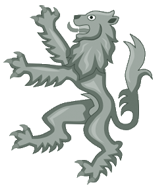 Identifying Marks
(aka Tattoos): When Christina notices “Mor” tattooed on Tor’s backside—given to mark him as the first
born twin—it gives him an idea. When Arthur Campbell is forced to “leave,” Tor decides to mark the arms of the
men with a Lion Rampant to identify them as members of the secret Highland Guard. After Bruce’s famous run-in
with the Spider in the cave on Rathlin, a web armband (like a torque) is added to the Rampant Lion crest. Some
of the guys have also added personalization (i.e. MacSorley has a birlinn in his).
Identifying Marks
(aka Tattoos): When Christina notices “Mor” tattooed on Tor’s backside—given to mark him as the first
born twin—it gives him an idea. When Arthur Campbell is forced to “leave,” Tor decides to mark the arms of the
men with a Lion Rampant to identify them as members of the secret Highland Guard. After Bruce’s famous run-in
with the Spider in the cave on Rathlin, a web armband (like a torque) is added to the Rampant Lion crest. Some
of the guys have also added personalization (i.e. MacSorley has a birlinn in his).
Maps
For a great map of the key castles and battles of the Bruce era click here.
Check back often as Monica will be updating this page when each book is published.
Back to Top
Timeline
:: 1297 Battle of Stirling Bridge (William Wallace defeats Edward I)
:: 1306 King Robert I (The Bruce) crowned
:: 1314 Battle of Bannockburn (Robert the Bruce defeats Edward II)
:: 1493 Lordship of Isles forfeited
:: 1513 Battle of Flodden Field (Invading Scots defeated by English)
:: 1542 Mary Queen of Scots born
:: 1543 Mary crowned
:: 1557 John Knox begins Reformation
:: 1567 Mary Queen of Scots abdicates to her son James VI
:: 1587 Mary Queen of Scots beheaded
:: 1587 General Band
:: 1592 Bonnie Earl of Moray murdered
:: 1594 Battle of Glenlivet (Huntly defeats Argyll)
:: 1597 Chiefs must provide charters for their land
:: 1603 Battle of Glenfruin (MacGregors defeat Colquhouns)
:: 1603 Union of the Crowns James VI of Scotland and James I of England
:: 1605 Guy Fawkes tries to blow up parliament
:: 1609 Statutes of Iona
:: 1625 Death of King James
:: 1692 Glencoe
:: 1746 Culloden
The Highland Guard in Context
A discussion of what precipitated the Scottish Wars of Independence invariably begins with a story of the
untimely death of King Alexander III of Scotland—probably because it’s a good one.
One dark and stormy night (March 19, 1286) Alexander makes an impulsive decision that will impact the future of
his kingdom in a way he could never have imagined. Anxious to return to his new young bride, the (randy)
forty-year-old king ignores the advice of his companions and braves the fury of the storm. When he subsequently
falls off a cliff and dies, he leaves Scotland without a direct male heir. The crown was to go to his young
granddaughter “the Maid of Norway,” but disaster strikes again when the six-year-old girl dies on her journey to
Scotland in 1290, leaving the throne up for grabs.
At one point there are fourteen claimants for the crown of Scotland (see a list and
family tree here). The two with the best claim were Robert the Bruce (known as “The Competitor,” the
grandfather of the future king) and John Balliol. Balliol had the better claim from a strict primogeniture
standpoint, but Bruce was a generation closer “in blood.”
To prevent a civil war between these two powerful families, the guardians of the realm (basically the interim
government), invite King Edward I to arbitrate. This was akin to inviting the proverbial fox to watch the
chicken coop. Edward arranges for a court to be set up with 104 auditors who eventually decide in Balliol’s
favor. King John is anointed king in 1292, but his reign would prove be a troubled one and—thanks to Edward
who’d asserted himself as his overlord—lacking in authority. A virtual puppet king, King John earns the derisive
nickname of “Toom Tabard” (interpreted as empty coat or jacket).
In 1297, King John attempts to assert some control by renouncing his homage to Edward. But the English king
quickly strikes back at Berwick-upon-Tweed and then defeats the Scots at the Battle of Dunbar. King John is
forced to abdicate for himself and his son, leaving the gate open for his nephew John “The Red” Comyn, Lord of
Badenoch.
In that same year, William Wallace begins his heroic “risings,” using revolutionary military tactics that Bruce
will adapt to even greater success later. After a series of small skirmishes, Wallace hands the English a
momentous defeat at the Battle of Stirling Bridge on September 11, 1297.
Wallace is named Guardian of Scotland. But a year after Stirling Bridge he suffers defeat at the Battle of
Falkirk. He resigns as Guardian in favor of Robert the Bruce and John “The Red” Comyn. Nominally (at least in
Bruce’s case) supporting the absent King John, the rivals are eventually joined by William Lamberton, Bishop of
St. Andrews. Not surprisingly, the joint guardianship doesn’t last. By 1302 Bruce has resigned and made his
peace with Edward. By 1304, under threat of English invasion, Comyn, too, makes his peace with the English king.
Edward’s peace, however, did not extend to William Wallace. In 1305, Wallace is captured and killed in a
particularly gruesome manner. If you’ve seen Braveheart, you get the gist.
So fifteen years after the death of the Maid of Norway, we are right back where we started: Edward asserting
control and a struggle between the rival Bruce and Comyn/Balliol factions. No one knows what precipitated the
violence, but on the February 10, 1306, Robert Bruce stabbed John “The Red” Comyn before the high altar of
Greyfriars Church in Dumfries, setting off the rebellion that would eventually make him king and win Scotland’s
independence.
The Highland Guard series spans this important period in Scotland’s history, opening with the death of Wallace in
1305 and ending with the Battle of Bannockburn in 1314, where Bruce’s defeat of Edward II wins Scotland’s de
facto independence from England (although the English would not concede this point until the signing of the
Treaty of Edinburgh-Northampton in 1328).
The years between Bruce’s crowning and Bannockburn can be loosely separated into five periods: the fight for
survival, the battle with England, the battle with Scotland’s nobles (civil war), the battle for the borders
(border raids), and the recovery of Scotland’s castles still garrisoned by the English. These periods provide
the inner framework for the Highland Guard series.
The first book, The Chief, centers on Bruce’s decision to make
his bid for the crown and ends with his coronation. The Hawk is about Bruce’s fight for survival, seeing him
flee Scotland, taking refuge in the Western Isles, and ultimately winning his crown back by a series of military
defeats over the English (aided by the timely death of King Edward I). The Ranger focuses on Bruce’s battle to
win Scotland’s nobles and vanquish his enemies (namely the Comyns, MacDowells and MacDougalls).
How Bruce went from “usurper,” to outlaw, to one of Scotland’s greatest kings and heroes is an amazing story of
perseverance, ingenious military command, tragedy (Bruce lost three of four brothers, numerous friends, and saw
his wife, daughter and sister—the later in a cage—imprisoned in England for years) and luck.
One of the keys to Bruce’s success was his adopting of the “guerilla” warfare tactics used by Wallace—what I call
pirate tactics. Bruce was one of the greatest knights in Christendom and abandoning the code of chivalry for
furtive tactics was a significant shift in the history of warfare, and one that could not have been made easily.
The tension is illustrated by Bruce’s nephew, Sir Thomas Randolph, who justified his temporary defection to the
English by accusing Bruce of fighting “like a brigand in stead of fighting a pitched battle as a gentleman
should.” (see resources: Scott, Robert the Bruce, pg. 111)
But to defeat the superior forces of the heavy mounted English knights, Bruce understood that he needed to take
away their advantage. As we learned in Vietnam, guerilla warfare does this. Bruce refused to meet the English in
pitched battle until he was ready to do so at Bannockburn.
It seemed reasonable to me that if you want to fight like a pirate, you might look to the West Highland
descendents of the greatest pirates of all—the Vikings. This is the genesis for the idea of the Highland Guard.
As mentioned in the Author’s Note of The Chief, Bruce did not
have a “best of the best” Special Forces unit of Highlanders. But he did have a meinie or personal retinue,
which included Robert Boyd, and other close cohorts like Christopher Seton, Alexander Fraser (Christina’s
brother), Thomas Randolf, James Douglas, Edward Bruce and Neil Campbell. And in one of those serendipitous
moments that sometimes happen in research, I found a mention of “Donald” son of Alistair (the inspiration for
the hero in The Hawk) who led a chosen “warband” of Islemen appointed by Angus Og MacDonald to protect Robert
the Bruce on his return to Scotland after taking refuge in the Isles in 1306.
What is also clear is that early on Bruce recognized the importance of the West Highlands. Indeed, at the seminal
battle of Bannockburn in 1314, Bruce led a division of Highlanders and Islesmen against the English. Many of my
“Highland Guard” were said to have fought along side him.
Bruce’s military genius might have made him king, but his recognition and ability to unify Scotland by forgiving
his enemies made him a great one.
Back to Top
The Books in Pictures (a slideshow)
On the Cutting Room Floor
(Deleted Scenes and Extended Author's Notes)
» The Hawk
Read Monica's extended Author's Notes for The
Hawk and find out what scenes ended up on the cutting room floor.
» The Chief
Read Monica's extended Author's Notes for The
Chief and find out what scenes ended up on the cutting room floor.
Family Tree
(A new window will open)
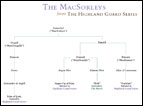
The Highland Guard
Can’t keep all those clan relationships straight? Here is a (very)
simplified family tree of the MacSorleys as they appear in the Highland Guard series. As this is
not intended to be used for genealogy purposes, there are few dates (which are often inconsistent
between sources).
Did you enjoy Monica’s Special Features? Stop by Twitter or Facebook and let her know.
















